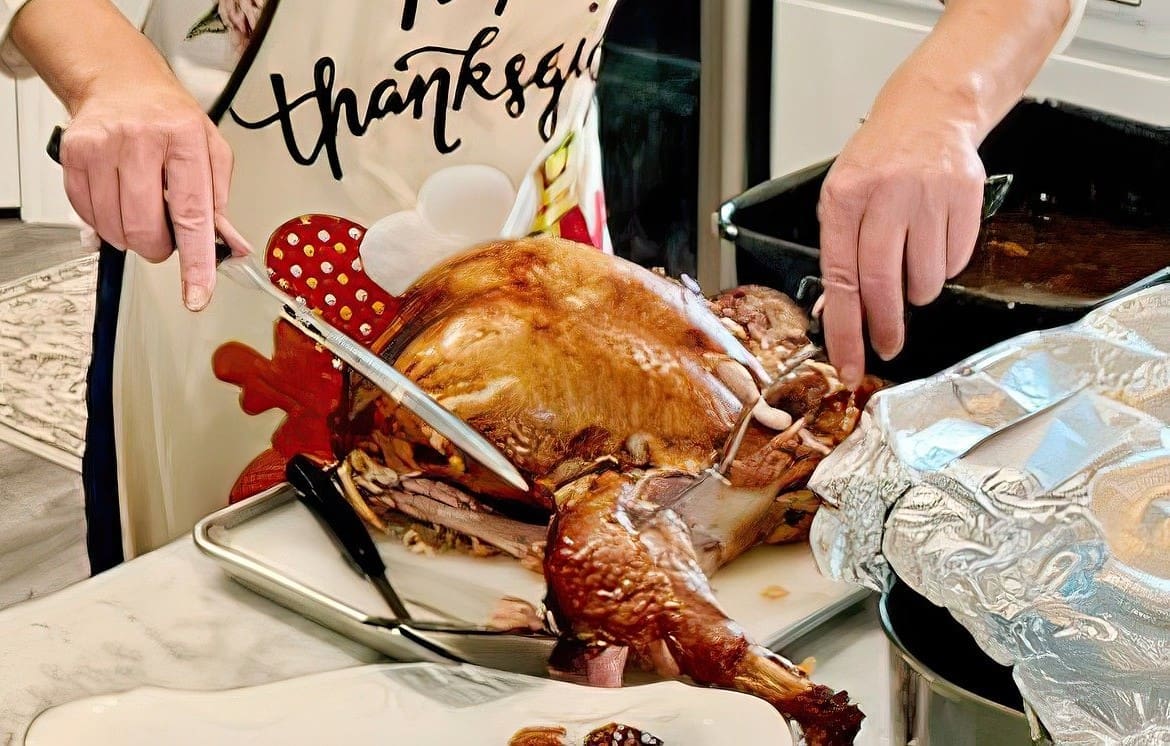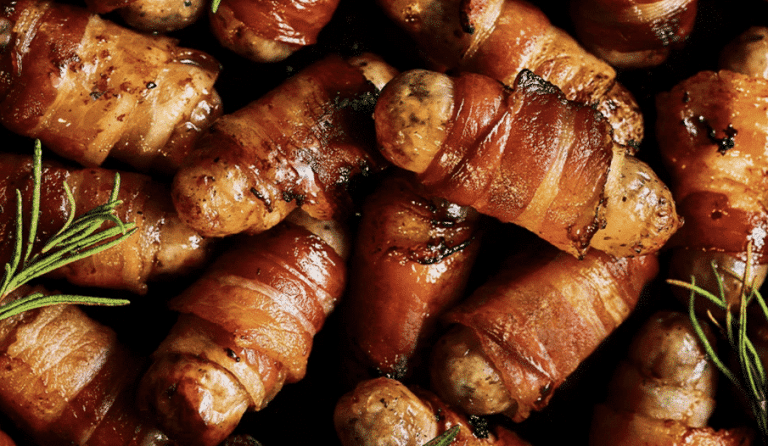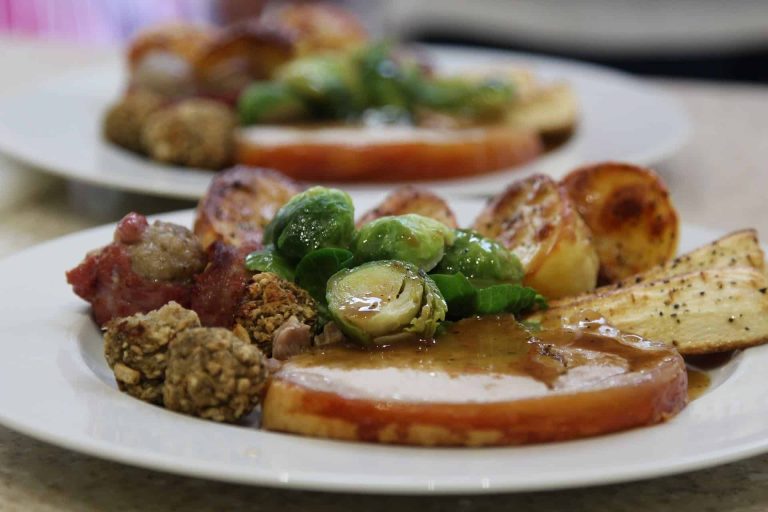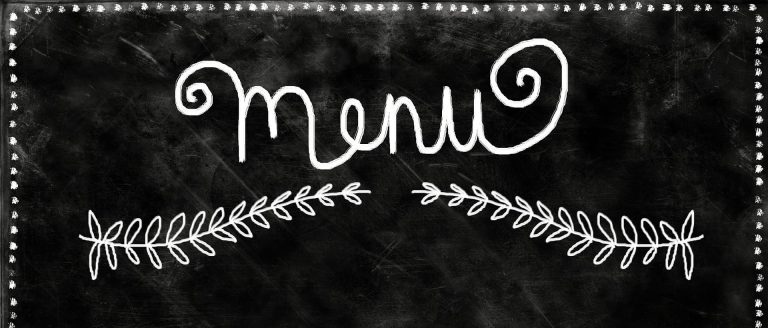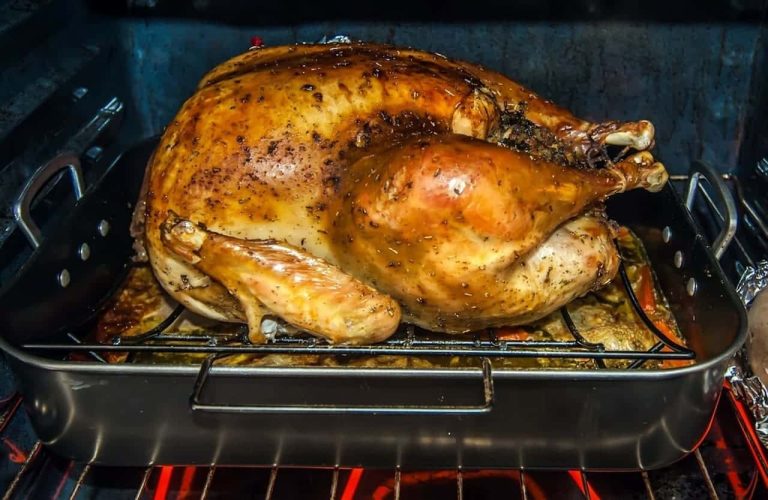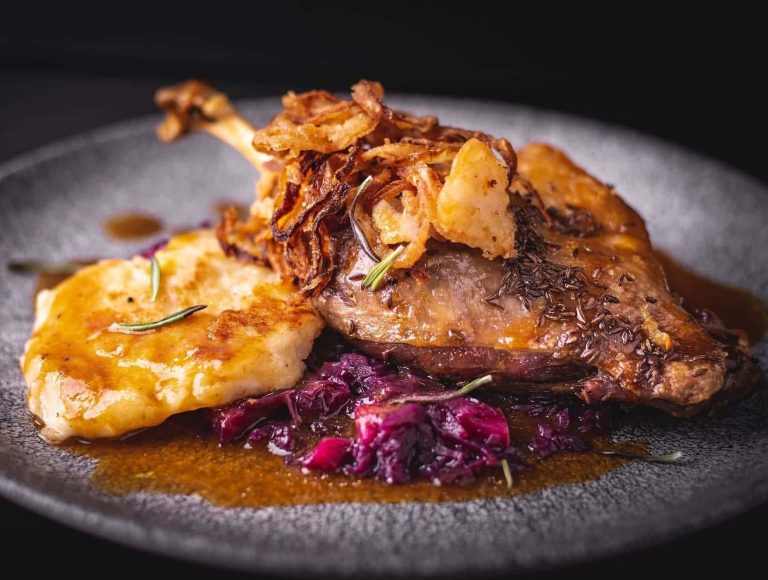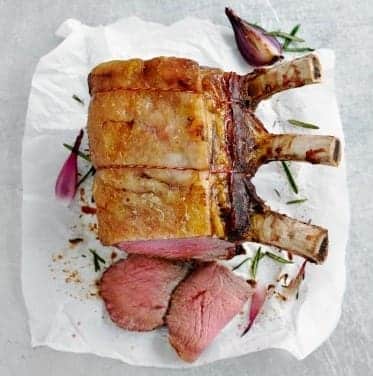How to brine a turkey at Christmas for juicy results
If you want to serve a juicy, tender and flavoursome turkey for your Christmas dinner, you might want to try brining it before roasting. Brining is a simple technique that involves soaking the turkey in a saltwater solution, often with herbs, spices and usually some sugar and other aromatics, for several hours or even days.
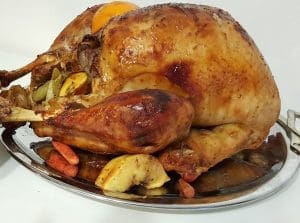 This helps the turkey retain moisture, season it from the inside out and enhance its texture.
This helps the turkey retain moisture, season it from the inside out and enhance its texture.
Among the big benefits of brining a turkey for Christmas include:
- Helping to reduce the bird’s cooking time
- Allows more margin of error if you overcook the meat.
Here, the Christmas.co.uk team will explain what brining is, how it works, what its history is and why it’s worth the effort.
At the bottom of this article, there’s a quick explanation of how to dry brine a turkey.
We will also offer tips on what to look for when doing brining for the first time, give step by step instructions on how to brine a turkey including timings, and offer an easy-to-follow recipe for turkey that has been brined.
For example, rinsing your turkey after brining is the ONLY time you wash meat – you need to remove the excess salt before cooking – before patting dry.
Your Christmas dinner turkey won’t taste the same again!
What is brining and how does it work?
Brining is a process of treating food with brine or coarse salt, which has been used for thousands of years to preserve and season meat, fish, cheese and vegetables.
Brine is essentially a salty liquid, usually made with water and salt, but sometimes with other ingredients such as sugar, vinegar, citrus juice, herbs and spices.
When you immerse a turkey in brine, the salt in the solution draws out some of the water from the turkey’s cells and replaces it with some of the brine’s water. This means that the turkey absorbs some of the extra water and salt, which helps it stay moist and tender during cooking.
The salt also breaks down some of the proteins in the turkey’s muscle, making it more tender and allowing it to hold more water. The herbs and spices in the brine add flavour to the turkey as well.
Christmas.co.uk top tip: Brining is growing in popularity, and you might find that this process delivers the tasty results you are looking for. Brining can also be used for other meats, and we recommend a great book by Samin Nosrat entitled ‘Salt, Fat, Acid, Heat: Mastering the Elements of Good Cooking’ to help you. Samin highlights that unsalted protein in meat when heated tends to let water which is otherwise attached to the protein escape – that’s the experience of dry and tough meat. Salt disrupts this, so more of the water remains bound to the protein. In brining, you have the additional benefit that the salt dissolves some of the proteins so the sugar and aromatics can be literally absorbed into the meat. Samin also says that brining allows more margin of error if you overcook the meat. She also recommends salting the meat sooner rather than later – so hours ahead of cooking rather than minutes ahead of cooking so that salt can be absorbed into the meat.
What is the history of brining?
The history of brining goes back to ancient times when salt was used as a way of preserving food without refrigeration. Salt was also valued as a commodity and a symbol of wealth and power.
The ancient Egyptians, Greeks, Romans, Chinese and other civilisations used salt to cure meat and fish, as well as to make cheese and pickles. Salt was also used as a part of religious rituals and offerings to the gods.
Brining was especially popular in regions where salt was abundant, such as the Mediterranean and Northern Europe. In Britain, brining was used to make salted meat such as bacon, ham and corned beef.
Brining became less common with the advent of refrigeration and modern food preservation methods, but it has seen a resurgence in recent years as a way of enhancing the flavour and texture of meat and fish.
oooOooo
How to brine a turkey
This video from the folks at allrecipes.com is American but offers a great way to brine a turkey – and shows how easy it is.
The main aim is to create a moist meat that when it is first carved, you will see the difference.
The voiceover highlights that the brining process effectively alters the cellular structure of the turkey to get the best results.
You can use a large pot or bucket, add warm water and salt and stir.
Then you add brown sugar and herbs to infuse flavour.
Add the turkey and store in a fridge for up to 10 hours.
Remove from the fridge and wash the brine off the bird.
Then cook!
To be fair, the turkey used in the video is massive and if you use a smaller turkey, the stay in the fridge won’t have to be for as long.
But the video shows there are just three easy steps to brining a turkey for Christmas.
How long to brine a turkey?
While the video shows a very large turkey, there is a rule of thumb guide on how long a turkey should be brined for.
Basically, you shouldn’t brine for longer than is necessary because you will run the risk of ruining the meat. So, aim for one hour of brining per 500g of meat. That means the average 2kg British turkey will need four hours of brining.
oooOooo
Why is brining a Christmas turkey worth the effort?
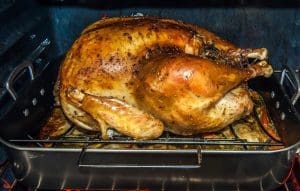
It makes your turkey juicier and moist. Turkey is a lean meat that can easily dry out during cooking. Brining helps prevent moisture loss by increasing the water content of the turkey’s cells. This means that even if you overcook your turkey slightly, it will still be juicy and succulent.
- It makes your turkey more tender and flavourful. Turkey can be tough and bland if not seasoned properly. Brining helps tenderise the turkey by breaking down some of the proteins in its muscle. It also helps season the turkey from the inside out by infusing it with salt and other flavours from the brine.
- It reduces cooking time and improves browning. Turkey that has been brined cooks faster than an unbrined turkey because it has more water in its cells that conducts heat better. It also browns better because the sugar in the brine caramelises on the surface of the skin. Not every recipe calls for sugar but those that add other aromatic flavours do tend to add brown or white sugar.
- It reduces shrinkage and waste. Turkey that has been brined shrinks less during cooking than unbrined turkey because it loses less water. This means that you get more meat for your money and less waste.
What to look for when doing brining for the first time?
If you are new to brining, here are some tips on what to look for when doing it for the first time:
- Choose a good quality turkey. Ideally, you want a fresh or thawed turkey that has not been pre-treated with salt or other additives. Check the label for words such as ‘enhanced’, ‘basted’, ‘injected’ or ‘self-basting’. These indicate that the turkey has already been seasoned or injected with a solution that may interfere with your brine. If you can’t find an untreated turkey, you can still brine it but use less salt in your brine or reduce the brining time.
- Choose a suitable container. You need a large container that can hold your turkey and enough brine to cover it completely. The container should be made of ceramic, glass stainless steel or food-grade plastic – avoid containers made of aluminium, copper or iron, as they may react with the salt or acid in the brine and affect the flavour or colour of your turkey. You can also use a large resealable plastic bag or a brining bag, which are specially designed for brining. Check first that the bag or container or bag fits in your fridge.
- Choose a good brine recipe. You can find many brine recipes online or in cookbooks, or you can create your own – or use the one we use below. The basic ingredients for brine are water and salt, and the amount you need depends on the size and weight of your turkey and the strength of your brine.
How long does brining take?
A general rule of thumb is to use 225 g of salt for every 3.8 litres of water, which makes a 6% brine solution. You can adjust the salt level according to your taste and preference, but don’t go below 3% or above 10%, as this may affect the texture or safety of your turkey.
You can also use other liquids instead of water, such as apple cider, chicken stock, beer or wine, but make sure they are not too acidic or alcoholic, as this may affect the brining process.
The brining time depends on the size and shape of your turkey and the strength of your brine.
We mentioned earlier that you should brine your turkey for about two hours per kilogram of weight.
If you are using a stronger brine (that is, more than 6% salt), you may need to reduce the brining time accordingly.
How to brine a turkey – step by step instructions
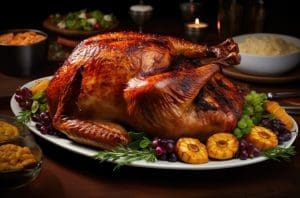
Prepare your turkey. Remove any giblets and neck from the cavity of your turkey and rinse it well under cold water. Pat it dry with paper towels and trim any excess fat or skin. If you want to stuff your turkey, do it after brining, not before.
Prepare your brine. In a large pot over high heat, bring some water (about 1/4 of the total amount you need) to a simmer before adding the sugar and salt. Stir until dissolved. Turn off the heat and add any herbs, spices and aromatics you want to use. Let the brine cool completely before using it.
- Brine your turkey. Place your turkey in your container or bag and pour enough brine over it to cover it completely. If necessary, weigh down your turkey with a plate or a heavy object to keep it submerged. Seal the container or bag tightly and refrigerate it for the recommended time.
- Rinse and dry your turkey. After brining, remove your turkey from the brine and discard the brine. Rinse your turkey well under cold water to remove any excess salt or seasonings. Pat it dry and let it rest at room temperature for about 30 minutes before cooking.
An easy brining recipe for turkey
Here is an easy brining recipe for roasting a turkey on Christmas Day:
Ingredients:
- 1 (5.4 kg) fresh or thawed turkey
- 8 litres cold water
- 225 g coarse salt
- 110 g brown sugar
- 2 bay leaves
- 15 g fresh rosemary
- 15 g fresh thyme
- 2 tablespoons black peppercorns
- 2 tablespoons juniper berries (optional)
- Zest and juice of 2 oranges
- Zest and juice of 2 lemons
- 60 g unsalted butter, melted
- Salt and pepper to taste.
Directions:
Follow the steps above on how to brine a turkey so, after brining and rinsing your turkey, follow these cooking instructions:
- Preheat oven to 165°C and position a rack in the lower third of the oven.
- Transfer your turkey to a large roasting pan fitted with a rack.
- Tuck the wings under the body and tie the legs together with kitchen twine.
- Brush your turkey all over with melted butter and season lightly with salt and pepper.
- Roast your turkey for about 3 hours, basting occasionally with pan juices, until an instant-read thermometer inserted into the thickest part of the thigh registers 74°C.
- Transfer your turkey to a cutting board and let it rest for at least 20 minutes before carving.
Enjoy your juicy, tender and flavourful turkey!
How to enjoy your brined turkey
For more recipe ideas once you have brined a turkey, then our great article on 7 classic Christmas turkey recipes to impress is for you!
oooOooo
Christmas Turkey Brine – Steve Lamb
We really enjoyed this video from Steve Lamb, the guy behind the River Cottage cookbooks.
He points out that the brining can be done ahead of Christmas Day so there’s no need to panic.
Starting with a big pan, he adds lots of salt and brown sugar and then juniper berries.
After that, he might surprise some viewers by adding gin. Yes, gin.
Then there’s squeezed lemon, garlic, rosemary and parsley.
He also recommends starting with the pan on the cooker hob – because carrying a big pot of water can be problematic.
He also describes how the brining process works – in some depth…
Once cooled he adds the turkey and stores for 48 hours.
From there, he places the turkey into a roasting dish and puts it into the oven.
The finished product is a moist and caramelised turkey for everyone to enjoy.
oooOooo
How to dry brine a turkey

Along with the wet brining process, it is also possible to use dry brining. This will also help ensure a moist and flavourful turkey.
Dry brining is a method of salting the turkey before cooking, which helps to draw out moisture and tenderise the meat.
Unlike wet brining, which involves soaking the turkey in a saltwater solution, dry brining does not require any extra liquid or equipment.
All you need is some salt, herbs, and spices, and a bit of time.
To dry brine your turkey, you will need to follow these simple steps:
- Remove any giblets and neck from the cavity
- In a small bowl, mix together some salt, black pepper, garlic powder, onion powder, thyme, rosemary, sage, and any other herbs or spices you like. You can also add some sugar or brown sugar for a touch of sweetness
- Rub the salt mixture all over the turkey, inside and out. Make sure to get into every nook and cranny, and under the skin if possible
- Place the turkey in a large baking dish or tray, and cover it loosely with cling film
- Place in the fridge for at least 12 hours, or up to three days. The longer you brine, the more flavourful the turkey will be
- When you are ready to cook the turkey, preheat the oven to 180°C (160°C fan)
- Remove the turkey from the fridge and let it sit at room temperature for an hour. Discard any excess liquid that has accumulated in the dish or tray
- Transfer the turkey to a roasting pan and tuck the wings under the body. Tie the legs together with butcher’s string. You can also stuff the cavity with some aromatics, such as lemon, onion, garlic or apple, for extra flavour.
- Check the packaging for the cooking time and follow this – ensure the internal temperature reaches 74°C in the thickest part of the thigh – consider investing in a meat thermometer
- Baste the turkey with the pan juices every 30 minutes to keep it moist and golden.
Remove from the oven, cover loosely with foil and allow the turkey rest for 20 minutes before carving and serving.
Dry brining a turkey
Dry brining is a simple and tasty way to prepare your turkey for Christmas. It enhances the natural flavour and texture of the meat and makes it easier to cook.
Try it this year and impress your guests with a mouth-watering turkey that they will remember for years to come.

